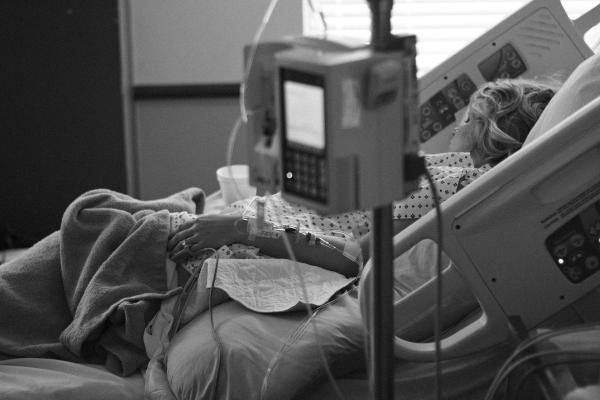The background of sepsis
In the presence of infection, the treatment principles are to remove the source and, while doing so, support the patient’s vital functions. In sepsis, removal of the source includes antibiotics, drainage of any infectious collections, and removal of dead tissue. There is a pattern to how sepsis affects us. Infections that involve the entire body cause the circulation to become less tightly connected, leakier. The fluids that leak from the circulation cause both the tissue to swell and the blood pressure to drop. Swollen lung tissue impairs oxygenation, creating a form of respiratory distress, and is why early respiratory management of COVID-19 was modeled (incorrectly as it turned out) on our sepsis treatment. Lowered blood pressure reduces oxygenation to vital organs, like the kidneys, causing further decompensation. Hallmarks of supportive care include providing fluids to account for the leakage, oxygenation for the respiratory distress, and intravenous medications to support the circulation.
Sepsis is very common and expensive. A study of US hospital records over six years identified 2.5 million cases, with a mortality of 12.5% (ranging from 5 to 34%) and a cost per admission of between $16,000 and $38,000. We spend roughly $24 billion a year on sepsis.
Given the cost and a reasonably well-defined pattern for treating sepsis, it should be no surprise that Medicare, which foots a lot of that cost, has identified a consensus of treatment actions and biomarkers as the sepsis “bundle.” Since 2015, hospitals have been required to report their adherence to these guidelines. A new study in Annals of Internal Medicine looked at how one large hospital system (University of Pittsburgh) is doing on that goal.
“This policy requires hospitals to collect and report data on their adherence to a multicomponent sepsis treatment bundle, including blood cultures, early antibiotics, serial lactate measurement, intravenous (IV) fluids, vasopressors for refractory hypotension, and documentation of a patient's response to treatment.”
The most effective treatment of sepsis requires early intervention and the sepsis bundle, SEP-1, requires specific actions and laboratory tests within three to six hours of initial diagnosis. These are process measures. The patient's fate—did they live or die, go home, or to post-hospital care—are outcome measures.
The Study
When SEP-1 was instituted, hospitals developed strategies to meet the requirements, often using their electronic health records to create “order sets” containing all the necessary processes and “alerts” to the need to institute and document treatment. The researchers used those electronic records to obtain their data, looking at admissions of those over age 18 and identified as having “sepsis” upon admission. [1] They identified 54,000 cases diagnosed within 6 hours of arrival into their emergency departments across eleven hospitals. They looked at their results two years after implementing the SEP-1 bundles compared to the quarter just before implementation:
- Giving antibiotics within 3 hours of admission rose from 45% to almost 50%
- Measuring lactate, a biomarker of circulatory failure, at three hours increased from 46.5% to 70.2%. A second required measurement at 6 hours improved somewhat less from 9.6% to 27%
- Giving an adequate amount of fluid within three hours rose from 9.9% to 13.2%
- Mortality from sepsis has been in decline for several years; instituting the SEP-1 bundle did not affect outcomes, as measured by ICU admissions, deaths, or discharges to home rather than skilled nursing facilities
After two years, antibiotic treatment was “properly” started in only half the cases; for fluid resuscitation, only 13% of patients. The only “improvement” was in measuring how we were doing. It should therefore come as no surprise that the process “improvement” had no impact on outcomes.
The researchers pointed out that it is easier to order a laboratory test than to coordinate the care necessary to start antibiotics or give guideline-indicated fluids – measuring is easier than doing.
Would it be fair to say that the results are disappointing? In arguably one of our best health systems, certainly for Western Pennsylvania, the area served by UPMC, you have a 50-50 chance of receiving care consistent with national guidelines – after two years of effort. From an outcomes point of view, you have nothing to show for it.
And all of this comes with the hidden cost of data collection, estimated by the researchers at $150,000 a month. You would think that with all the money invested in electronic health records, and all the physician time diverted into documenting rather than caring, that at least this data could be collected at little cost. The reality is that there are now fleets of nurses assigned to reviewing electronic records and tallying results by hand to generate required data to CMS.
The last word goes to the researchers, emphasis mine.
"Overall, our findings suggest that SEP-1 implementation had variable effects on its targeted process measures and that either there was no associated change in outcomes or that any benefits to patients may be counterbalanced by harm in other patients from the fixed application of a sepsis treatment bundle."
[1] SEP-1 is a timed set of measurements. It is relatively easy to “start the clock” on timing if the patient is being admitted, rather than for patients who develop sepsis after admission where the time of diagnosis may be ambiguous. To eliminate that uncertainty, the researchers looked only at those whose timing began at admission.
Source: Treatment Patterns and Clinical Outcomes After the Introduction of the Medicare Sepsis Performance Measure (SEP-1) Annals of Internal Medicine DOI: 10.7326/M20-5043




